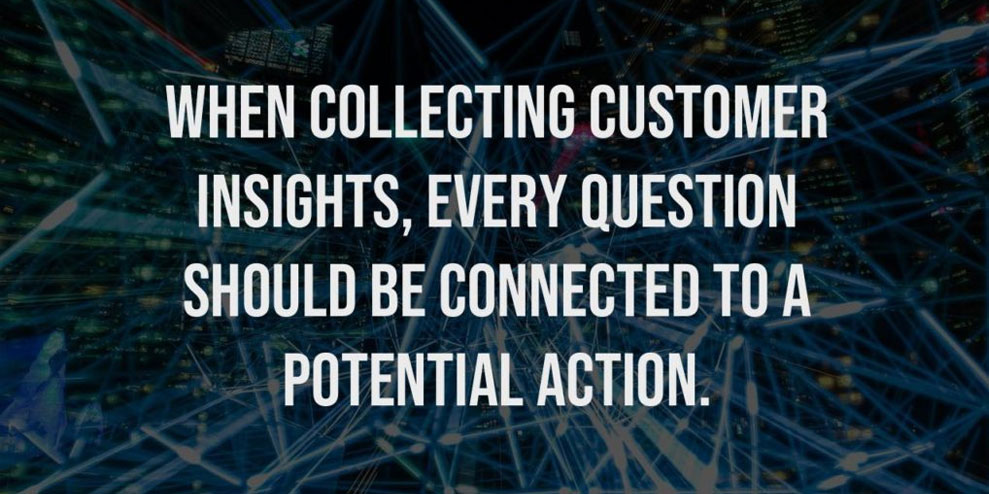When we coach clients on their branding and marketing strategies, we like to marry best practices with customer data. Although some clients want us to use our research methods to do a deep dive into their customers, most companies want us to use their existing data—either collected by themselves or an outside company—as the source of customer knowledge. Over the years, I’ve noticed some common pitfalls in the ways customer insights are collected and used across companies of all types and sizes.
Here are five ways to avoid some of the most common ones.
1: Have A Framework
Before conducting any research you should have a framework for organizing and understanding the way your customers see your business and industry. And, you should only collect data that helps you build out that framework.
One of the keys to having an effective framework is understanding what it is and what it isn’t:
- It Isn’t: a predetermined way that you believe the customers to be that you try to prove.
- It Is: a way of creating parameters that shape the way you collect and understand the data.
- It Is: a lens through which you interpret the data you collect.
2: Collect Data With A Purpose
This one is related to the first point and is the way to avoid the most common pitfall I see companies make. It’s what plagues much of Big Data: data is collected with the unspoken assumption that by virtue of collecting it, an answer will appear.
The most obvious place this creeps in is in tracking studies—tracking year-over-year changes in metrics. As a result of historical practices, what other businesses do, or the hot metric of the moment, I often see companies track metrics, look at them, acknowledge them, but then do nothing specifically actionable with them.
If I could drive one point home in this blog, it would be this: every question you ask should tie to a potential action.
If it doesn’t tie to a potential action, it’s unlikely to get used, it wastes money, and it decreases clarity because you have more data to sort through in making a decision.
In the best cases, it is usually a series of questions related to a single action, as it gives the action both more depth and a broader perspective.
Research is only as good as the questions you ask. If you don’t ask the right questions ahead of time, you may end up wasting time and money.
3: Make Sure Your Focus Groups Are Focused
This mostly comes down to a recruitment issue. But recruiting the right people is at least half of the battle.
Too often we have seen a person in a focus group that doesn’t fit the mindset or even the demographics that the group is supposed to represent. It becomes an even bigger problem when the outlier has the most dominant personality in the group.
Clear communication between the recruiting facility and the company, and multiple screenings are key.
4: Embrace The Power of One-On-One
I like digging into marketing journals to both find innovative ideas other companies aren’t using and to gain historical perspectives on marketing. One of my favorite marketing articles was published early in 1952 in the Harvard Business Review: “Qualitative Market Research” by Allan R. Wilson. It is the first article the Harvard Business Review published on qualitative research.
In it, Wilson explores the potential for the new field of qualitative research. My favorite point that he subtly makes and that seems to have been lost on much of the qualitative research that has followed the article could be rephrased as: if you really want to learn about someone, would you interview their three best friends or a hundred people that met them just once or twice?
Interviewing true Brand Lovers—our term for customers that have the strongest and most profitable relationship with you—can provide some insights more effectively and efficiently than any other type of research.
Brand Lovers often know more about your brand than you do.
5: Sell In Ahead of Time
Research is only useful if people buy into it.
We’ve seen companies produce great research only to see it wasted because some people in the company don’t view it as important or as immediately relevant.
Before conducting any research, think about what departments the research could potentially affect. Get their input; find out what is important to them.
Having people invested early on makes it easier to get them to buy in and, more importantly, take action when you deliver the findings of the research.
–
Seeking to build and grow your brand using the force of consumer insight, strategic foresight, creative disruption and technology prowess? Talk to us at +9714 3867728 or mail: info@groupisd.com or visit www.groupisd.com




